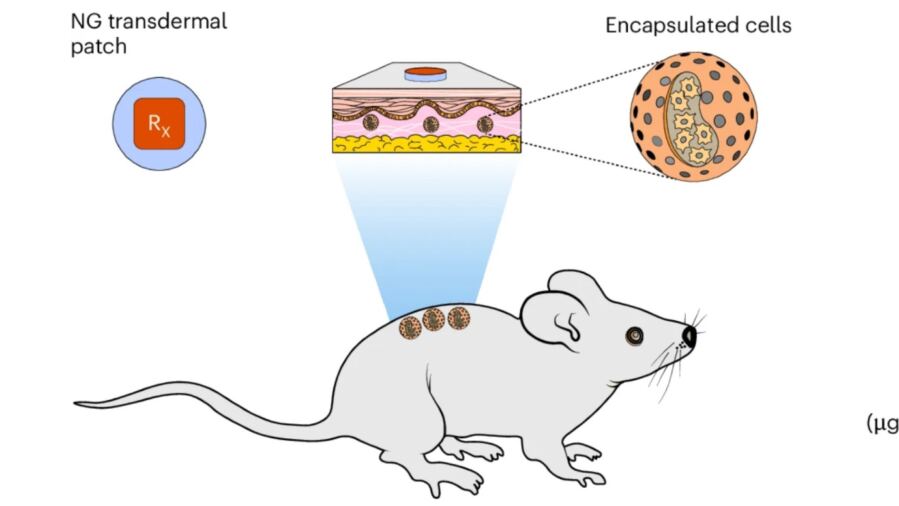A centuries-old heart medication may hold the key to revolutionizing how we deliver advanced cell therapies. Scientists at ETH Zurich have developed an ingenious system that uses nitroglycerin patches – the same ones prescribed for heart conditions since the 1890s – to control genetically engineered cells that produce therapeutic proteins on demand.
This innovation, detailed in Nature Biomedical Engineering, could transform treatment for millions living with type 2 diabetes and potentially other chronic conditions. The system allows precise control over therapeutic protein production simply by applying or removing a patch from the skin.
“For me, this solution is the best gene switch that my group and I have built so far,” says Martin Fussenegger, Professor of Biotechnology and Bioengineering at ETH Zurich’s Department of Biosystems Science and Engineering in Basel. The beauty of the approach lies in its simplicity – patients could easily apply patches themselves, with the medication quickly diffusing through the skin to activate implanted therapeutic cells.
In trials with diabetic mice, the system maintained healthy blood sugar levels for 35 days by triggering the controlled release of GLP-1, a hormone that stimulates insulin production. The treated mice showed normalized insulin levels and reduced body weight, without the cardiovascular side effects sometimes associated with nitroglycerin.
The innovation builds on the growing field of cell therapy, where human cells are modified to serve as living drug factories within the body. While promising, these therapies have faced challenges in controlling exactly when and how much medication is produced. This new switch provides that precise control through a familiar medical device – the skin patch.
The system works through a cascade of natural human cellular components. When nitroglycerin from the patch reaches the engineered cells implanted under the skin, they convert it to nitric oxide, a natural signaling molecule. This triggers the cells to produce therapeutic proteins like GLP-1 for diabetes treatment.
Notably, the entire system is built using only human proteins and cellular machinery, reducing the risk of immune reactions that can occur with components from other species. The researchers demonstrated that the therapeutic effect could be started and stopped reliably by applying or removing patches, giving patients and doctors precise control over treatment.
For the one in ten people globally affected by diabetes, this approach could offer an alternative to regular injections. Rather than repeatedly administering artificial insulin or GLP-1 drugs, patients’ bodies could produce these proteins naturally, regulated by a simple patch.
The implications extend beyond diabetes. “Fundamentally, it’s possible to develop cell therapies for other metabolic, autoimmune or even neurodegenerative diseases – in principle, for everything that requires dynamic regulation,” explains Fussenegger.
However, the path to human treatment remains long. “Developing a cell therapy to market maturity not only takes decades but also requires lots of staff and sufficient resources,” Fussenegger notes. “There’s no shortcut.”
Still, the system represents a significant advance in making cell therapies more practical and patient-friendly. While many current drugs act like “a hammer that is used to strike at a problem blindly,” as Fussenegger puts it, “Cell therapies solve the problem in a similar way to the body.”
The research team’s next steps will focus on further testing and refinement of the system, working toward eventual clinical trials. If successful, this marriage of 19th-century heart medicine with 21st-century genetic engineering could usher in a new era of controllable cell therapies for chronic diseases.
If our reporting has informed or inspired you, please consider making a donation. Every contribution, no matter the size, empowers us to continue delivering accurate, engaging, and trustworthy science and medical news. Independent journalism requires time, effort, and resources—your support ensures we can keep uncovering the stories that matter most to you.
Join us in making knowledge accessible and impactful. Thank you for standing with us!

